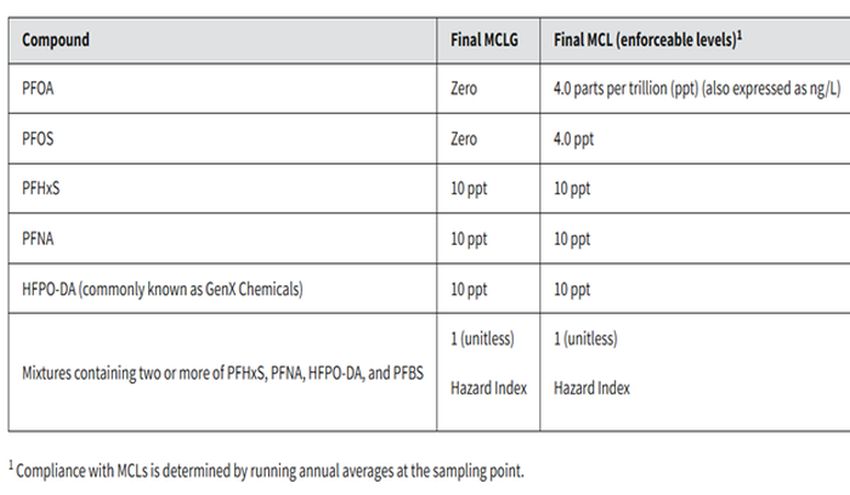- with readers working within the Environment & Waste Management industries
The U.S. Environmental Protection Agency (EPA) has published a much anticipated roadmap for how Administrator Lee Zeldin plans to address per- and polyfluorinated substances (PFAS) in the coming months. The announcement signals important changes ahead. EPA also issued critical guidance to help companies understand how to provide new information required for premanufacture notifications (PMNs) under the Toxic Substances Control Act (TSCA) until the agency is able to update the Central Data Exchange (CDX) reporting platform. In addition, the Office of Chemical Safety and Pollution Prevention (OCSPP), which administers TSCA and the Federal Insecticide, Fungicide, and Rodenticide Act (FIFRA), is poised to gain more resources as part of the Administrator's plan for reorganizing EPA.
Plans to Address PFAS and Provide Relief from TSCA Section 8(a)(7) PFAS Reporting
On April 28, 2025, Administrator Zeldin announced a comprehensive list of actions that EPA will undertake to address PFAS. Some of these actions are specifically designed to advance the Administration's priorities to enhance cooperative federalism and fulfill EPA's statutory obligations. For example, EPA expects to focus on building partnerships with states and local communities as it seeks to "enforce Clean Water Act and TSCA limitations on PFAS use and release to prevent further contamination." The agency is specifically pledging to "address the most significant compliance challenges and requests from Congress and drinking water systems related to national primary drinking water regulations" for the six PFAS chemicals in Table 1. This rule, which is currently being challenged in court, calls upon public water systems to monitor and comply with water treatment deadlines over a relatively short timeframe between 2027 and 2029. EPA also plans to "ramp up the development of testing methods to improve detection and strategies to address PFAS."
Table 1. Six PFAS Drinking Water Limits to be Implemented 2027-2029. Source: EPA.

Notably, the agency's statements on the planned use of its waste disposal and clean up authorities may bring an upswing of activity not seen in these programs for many years. Specifically, EPA has expressed interest in leveraging the Resource, Conservation and Recovery Act (RCRA) to address releases of PFAS from manufacturing operations. EPA is also indicating a willingness to engage with Congress on a Comprehensive Environmental Response, Compensation, and Liability Act (CERCLA or Superfund) liability framework to protect "passive receivers" of PFAS.
With respect to the looming TSCA PFAS reporting rule, which is slated to begin on July 11, 2025, the Administrator announced the need to move "smartly" to collect "necessary" information under TSCA Section 8(a)(7). EPA's announcement signaled an intent to reduce the reporting burden for small businesses and article importers. This expansive reporting rule requires manufacturers (including importers) to report detailed information on the manufacture or import of PFAS for a commercial purpose during the time period from January 1, 2011 – December 31, 2022, alone or in any type of industrial or consumer product subject to EPA's authority. The current rule has only one exemption for the narrow category of certain imported municipal solid waste streams. When this rule was under development, EPA was criticized for failing to include traditional exemptions such as those for small businesses and articles. The April 28th announcement indicates that regulatory relief – in some form – can be expected soon.
EPA's Planned Reorganization and How to Provide New Information Required for PMNs
On May 2, Administrator Zeldin announced EPA's planned reorganization efforts under Executive Order 14158, "Implementing the President's 'Department of Government Efficiency' Workforce Optimization Initiative." EPA's reorganization is expected to save $300 million annually, according to EPA's press release. In part, the reorganization seeks to coordinate and transfer the science resources of the Office of Research and Development (ORD) into the air, water, waste, and chemical and pesticide program offices. Notably, OCSPP, which administers TSCA and FIFRA, will gain over 130 scientific, technical, bioinformatic, and information technology experts to work on the backlogs in both new chemical reviews and pesticide reviews.
Separately, EPA has issued new guidance for submitting PMNs for new chemicals. This announcement offers needed assistance on how to comply with certain new information requirements prior to the rollout of enhancements to the PMN reporting platform on CDX. In December 2024, EPA issued a final rule which updated the procedures for notifying new chemicals. EPA's guidance explains how to submit required information that is not yet incorporated into the CDX reporting platform. The updated rule eliminates the use of the low volume exemption submission for PFAS and other persistent, bioaccumulative, and toxic chemicals. In addition, the 2016 changes to TSCA's statutory decision criteria are now incorporated into regulation, and EPA made several other important changes that expand the information companies must provide. This final rule strengthened EPA's ability to reject notices with errors or which are incomplete, which means that companies who do not submit the new information properly risk losing valuable time in these reviews. Again, companies should be mindful that more information is now required for new chemical submissions and this welcomed guidance is not a substitute for knowing the rules.
The content of this article is intended to provide a general guide to the subject matter. Specialist advice should be sought about your specific circumstances.



